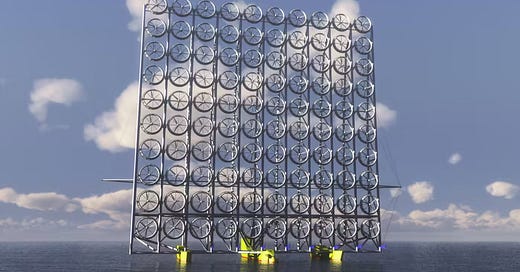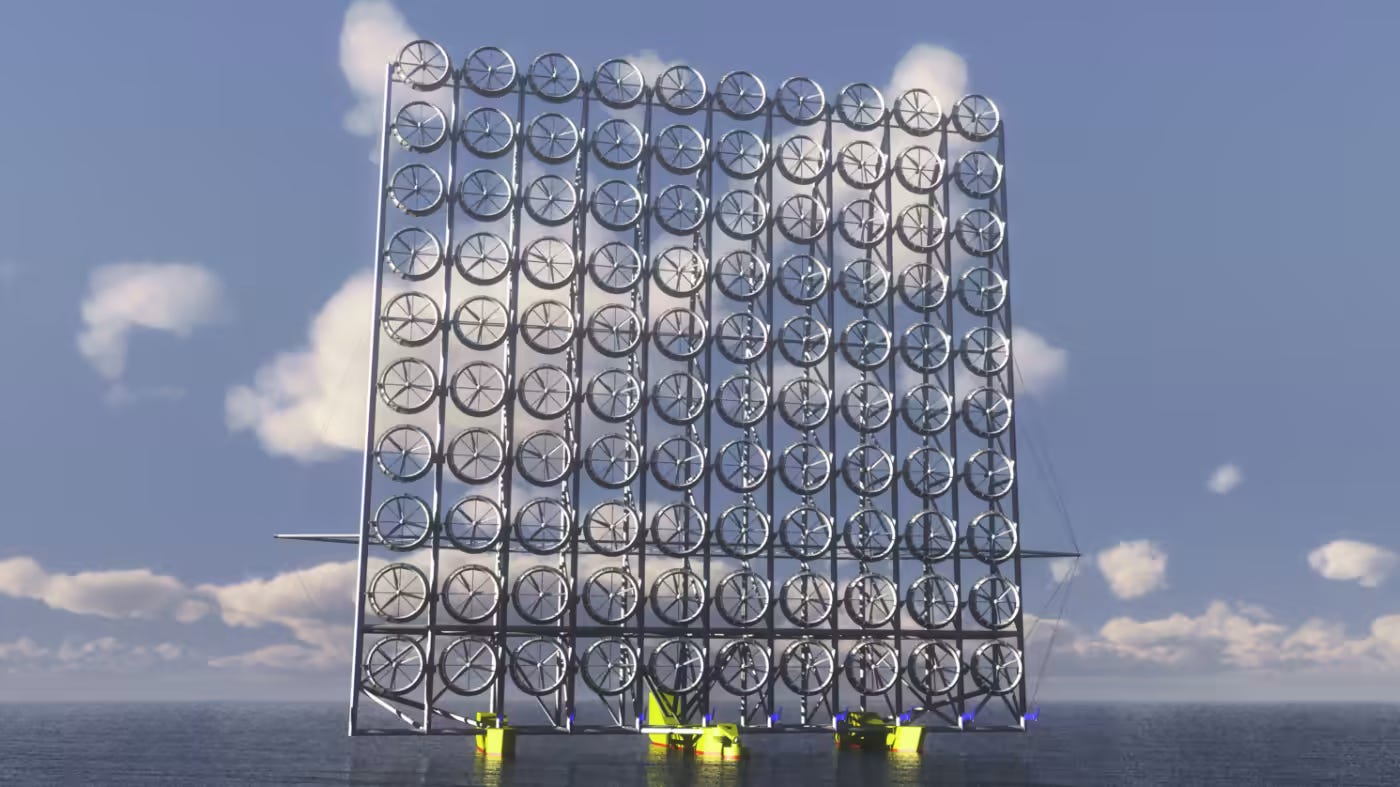A jack of all traits
An insight into my academic research project on wind turbines
Wind energy: we thought we had seen it all. Well, that is what I thought when I was looking for a research project topic for my final year’s dissertation. After looking at an article on Nikkei Asia, I saw an exciting opportunity to conduct some further research on wind turbines. The twist is, the technology isn’t that new, nor is the physics that relatively complex. So why hasn’t this become the staple for wind energy generation?
Let me first introduce you to the concept and how it can be very beneficial.
On the article, the technology is referred to as ‘wind lens’ technology, which uses the principles of the Bernoulli's Equation. The equation highlights a prime example of the conservation of mass, stating that:
If the area in which a fluid flows through decreases, the velocity increases
A cluster turbine configuration capable of generating more energy than a wind turbine with the same size.
Nikkei Asia - Image courtesy of Kyushu University
Now using this principle, researchers at the University of Kyushu, Japan, have come up with a cluster design that places multiple of these wind turbines in a grid formation. This means, instead of having one large turbine, you can have a grid of smaller ones with these ‘wind lens’ turbines that can enhance the power generation capabilities compared to conventional wind turbines. This is given that we have the same total area of wind turbine or ‘swept area’.
Now despite the new grid configuration of the wind turbine being a fantastic new idea, the technology of this ‘lens’ isn’t new at all. With the design of the Turbojet engine back in 1930 by Hans von Ohain, Frank Whittle1 invented the first of its kind and now around 100,000 flights per day operate on this technology.
Given the mastery of this technology, it started to be implemented into wind turbines in 1975, with the this new type being called Diffuser Augmented Wind Turbines or DAWTs for short. A lot of research has been conducted on DAWTs and it turns out it is the jack of all traits.
Right now, wind turbines have three key problems:
Manufacturing:
The size of these behemoths are increasingly more difficult to manufacture despite the breakthrough in composite technology.
Delivery:
Even after manufacturing it, delivering these giant blades (up to 120m each) make it virtually impossible to get it to the site.
Noise:
If you are near a wind turbine, you have probably realised its massive scale and the noises that come with it.
Using DAWTs and this grid like structure you can make the blades much smaller, making manufacturing and delivery much simpler. And thanks to the diffuser surrounding the wind turbine, vortices, which are generated by rotating objects, are much less likely to form, which reduces the largest source of noise by a wind turbine.
Wow, a technology that has been well researched, ticks all the boxes to solve the problems facing the current technology, but why the hold up?
Well, up till now, DAWTs were never really seen as contenders due to the diffuser as you couldn’t easily manufacture a large one. But given the new grid structure from Kyushu University, we should be seeing this technology implemented more on large scale projects, like their own offshore research facility of the coast of Japan.
Now where does my research come into this?
The aim of my experiment, is to see whether this technology is possible to implement in urban environments as an effort to boost microgeneration alongside solar panels. This urban case offers different wind environments compared to the off-shore experiment currently underway. The results of my research hopefully can help others create this technology so it can be placed on roofs of buildings to grow the microgeneration market. By the end of this academic year, I will update you all on my findings, and my plans regarding this exciting technology.
In the meantime, feel free to explore more about wind energy and the latest advancements and problems we face and if you found this topic interesting, let me know by leaving a like or comment.
Happy New Year!!
Have a good week,
Regards,
Maxime





Very much looking forward to your findings!